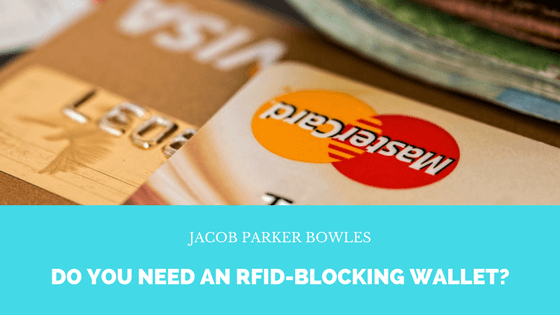Wallets used to be primarily fashion objects- you’d choose it for its color, embellishment, or design. Maybe you’d go with a leather one over pleather because it would hold up better or you’d choose one with more pockets for storing all your cards and money, but ultimately it came down to having a stylish and practical pouch to tote your cards around in. Now, you may have noticed some people carrying around these bulky metallic squares that look more like mint tins than wallets. They’re not trying to be stylish in anyone’s book, but many safety-conscious people are forgoing fashion in favor of security.
RFID stands for radio frequency identification and it uses radio waves to identify and track objects. RFID is a technology with many practical purposes, connecting billions of devices to the internet and serving as a vital tool for companies that use it to manage inventory, track assets, authenticate items, and ensure patient safety. However, RFID is, like many technologies, a double-edged sword. As useful and essential as it may be for everyday purposes, it is also an invitation for hackers to infiltrate the technology and steal sensitive data.
Credit card users that think they are safe from fraud having the chip cards now over swipe cards may have another cause for concern. RFID gives hackers the power to steal your credit card information simply by standing near you. You could be standing in line at the grocery store with your wallet in your pocket or purse and never even know that your information is being stolen by the person behind you!
RFID chip cards are meant to be both more secure and more convenient than swipe cards. By bypassing the process of swiping the card into an internal system and storing user information, the transaction can be completed wirelessly with the touch of a chip to a scanner with a unique, one-time code for each transaction.
The sophisticated and high-tech form of digital identity theft in which hackers use handheld scanners to activate cards from several feet away and steal all the personal information contained within the card is known as RFID skimming. This type of digital pickpocketing is a real, albeit minor, cause for concern. According to some reports, the chance of having your information stolen in this way is less than one percent, and major credit card companies insist that RFID chips have advanced to sending out a one-time code with each transaction, so hackers would be able to do little more than make a single fraudulent purchase with the stolen information. Plus, not all chip cards rely upon RFID technology. While some forms of identification such as passports and licenses are equipped with RFID chips, most chip cards use EMV technology, the European-style chip-and-PIN system, which is less vulnerable to remote skimming.
So should you invest in an RFID-blocking wallet designed to protect your cards by interfering with radio waves? Admittedly, your chances of falling victim to RFID fraud are very slim. ATM skimming, which I will discuss next, is far more common. However, when your credit card information is at stake, it pays to be diligent. If you have RFID chip cards and want the peace of mind of knowing that your information is 100% safe, it may be worth your time to check out some of the RFID-blocking wallets available for purchase.

